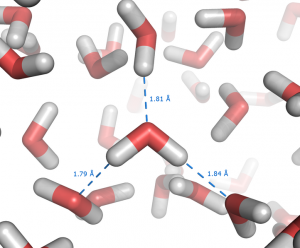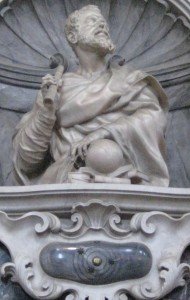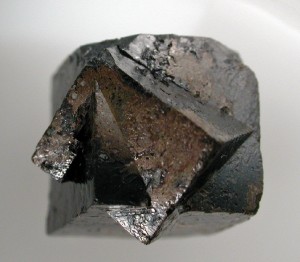The Barringer meteor crater is an iconic Arizona landmark, more than 1km wide and 170 metres deep, left behind by a massive 300,000 tonne meteorite that hit Earth 50,000 years ago with a force equivalent to a ten megaton nuclear bomb. The forces unleashed by such an impact are hard to comprehend, but a team of Stanford scientists has recreated the conditions experienced during the first billionths of a second as the meteor struck in order to reveal the effects it had on the rock underneath.
The sandstone rocks of Arizona were, on that day of impact 50,000 years ago, pushed beyond their limits and momentarily – for the first few trillionths and billionths of a second – transformed into a new state. The Stanford scientists, in a study published in the journal Nature Materials, recreated the conditions as the impact shockwave passed through the ground through computer models of half a million atoms of silica. Blasted by fragments of an asteroid that fell to Earth at tens of kilometres a second, the silica quartz crystals in the sandstone rocks would have experienced pressures of hundreds of thousands of atmospheres, and temperatures of thousands of degrees Celsius.

A meteroite impact event would generate shock waves through the Earth.
NASA
What the model reveals is that atoms form an immensely dense structure almost instantaneously as the shock wave hits at more than 7km/s. Within ten trillionths of a second the silica has reached temperatures of around 3,000℃ and pressures of more than half a million atmospheres. Then, within the next billionth of a second, the dense silica crystallises into a very rare mineral called stishovite.
The results are particularly exciting because stishovite is exactly the mineral found in shocked rocks at the Barringer Crater and similar sites across the globe. Indeed, stishovite (named after a Russian high-pressure physics researcher) was first found at the Barringer Crater in 1962. The latest simulations give an insight into the birth of mineral grains in the first moments of meteorite impact.
Simulations show how crystals form in billionths of a second.
The size of the crystals that form in the impact event appears to be indicative of the size and nature of the impact. The simulations arrive at crystals of stishovite very similar to the range of sizes actually observed in geological samples of asteroid impacts.
Studying transformations of minerals such as quartz, the commonest mineral of Earth’s continental crust, under such extreme conditions of temperature and pressure is challenging. To measure what happens on such short timescales adds another degree of complexity to the problem.
These computer models point the way forward, and will guide experimentalists in the studies of shock events in the future. In the next few years we can expect to see these computer simulations backed up with further laboratory studies of impact events using the next generation of X-ray instruments, called X-ray free electron lasers, which have the potential to “see” materials transform under the same conditions and on the same sorts of timescales.
![]()
This article was originally published on The Conversation. Read the original article.








